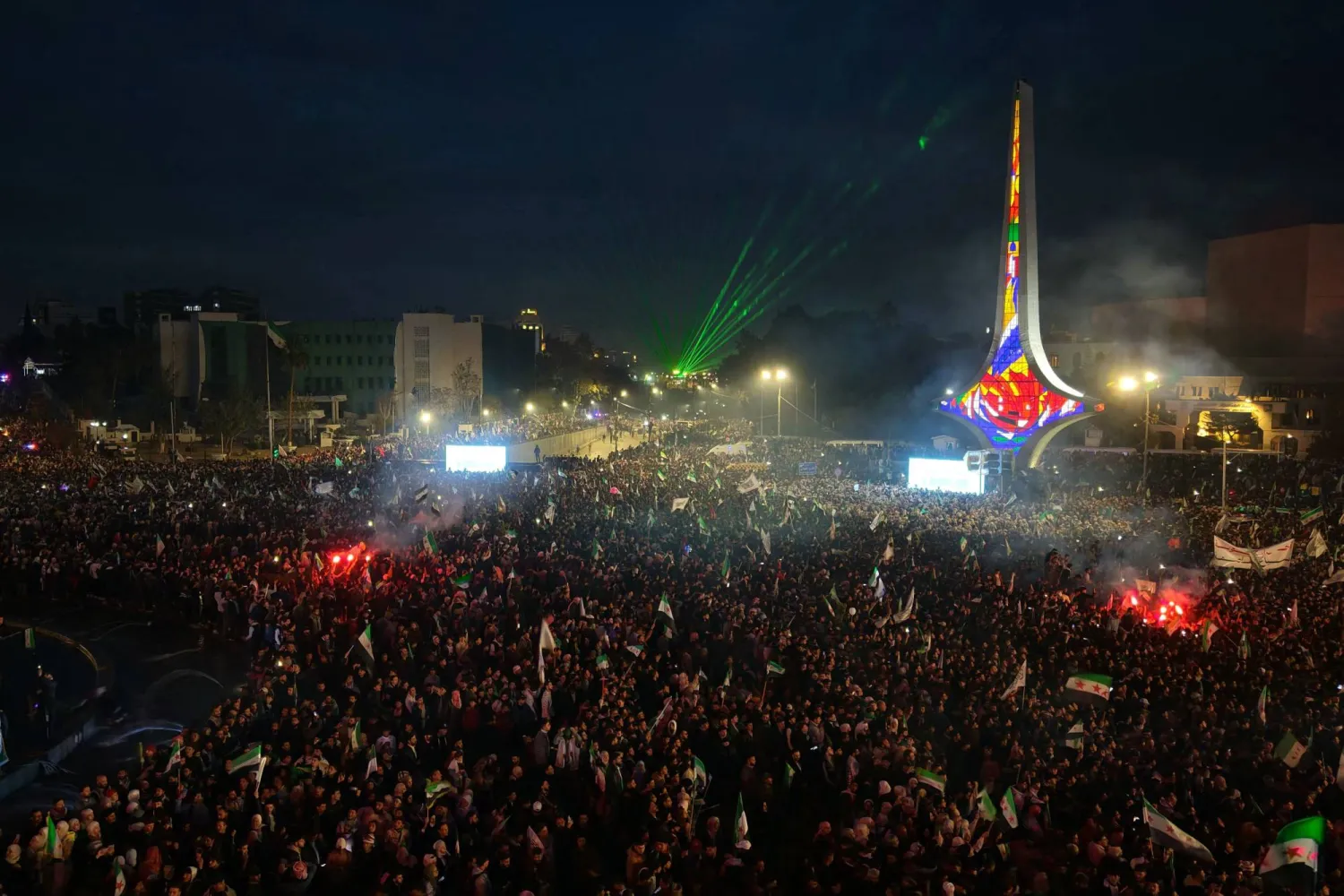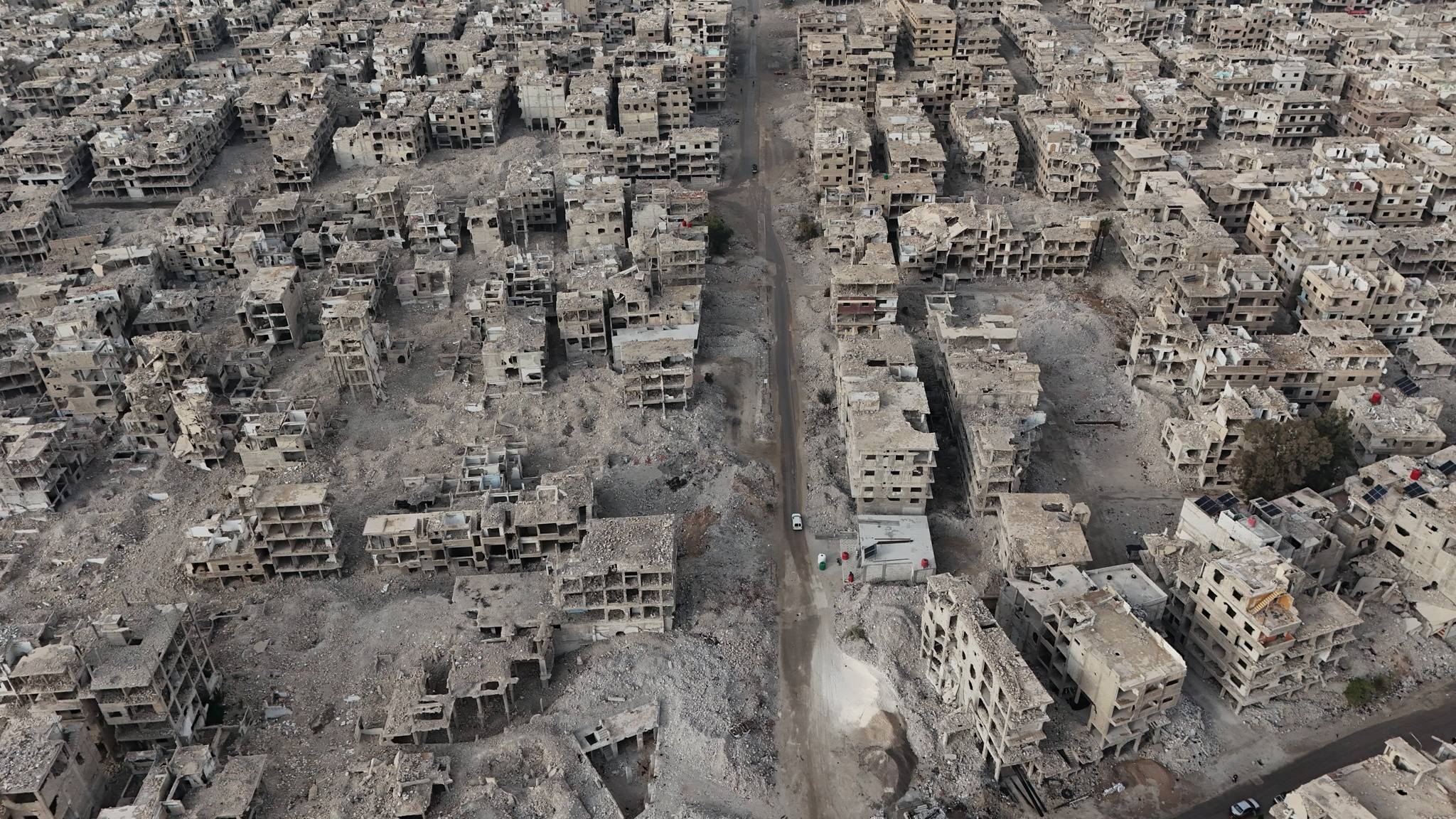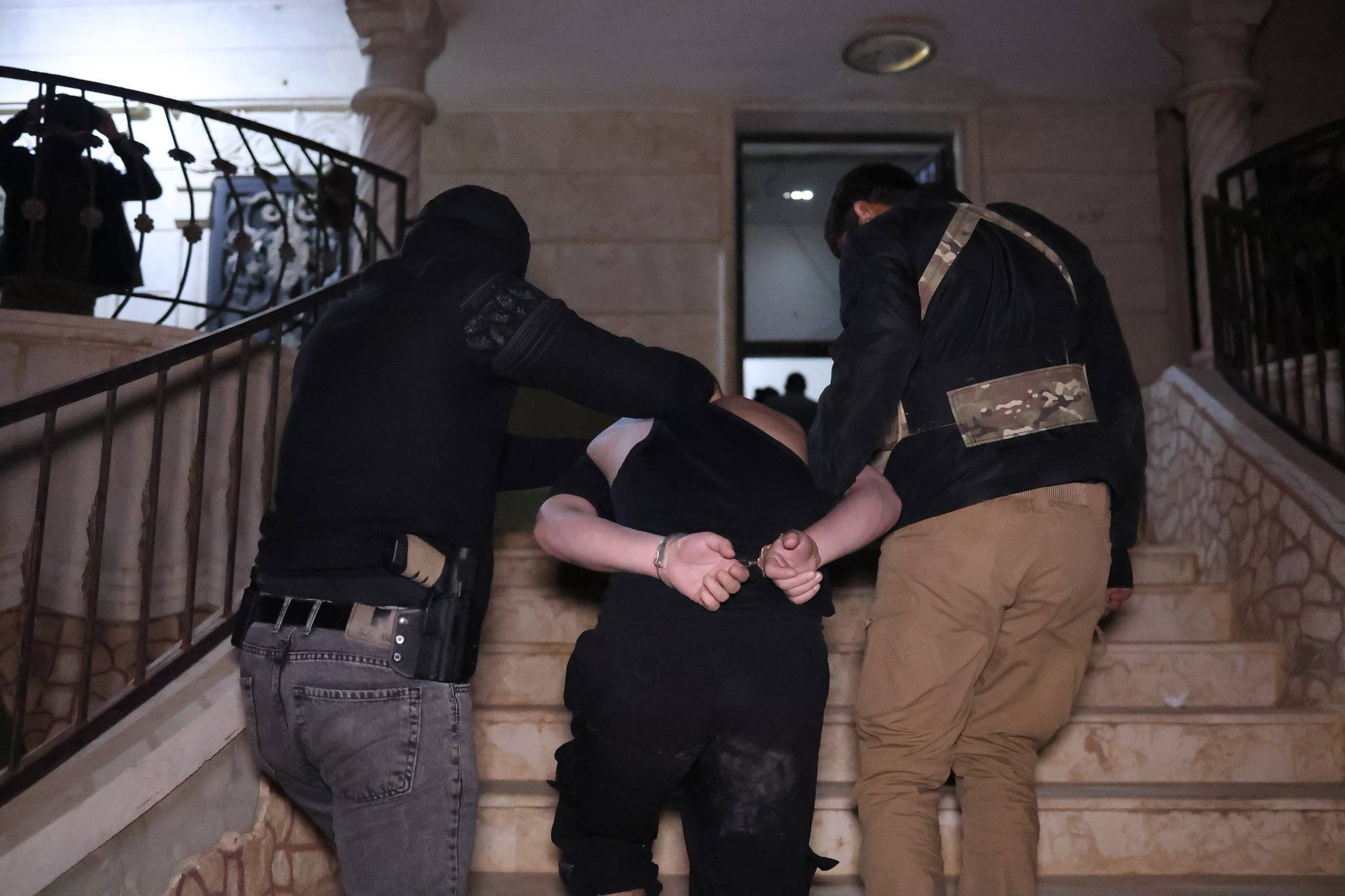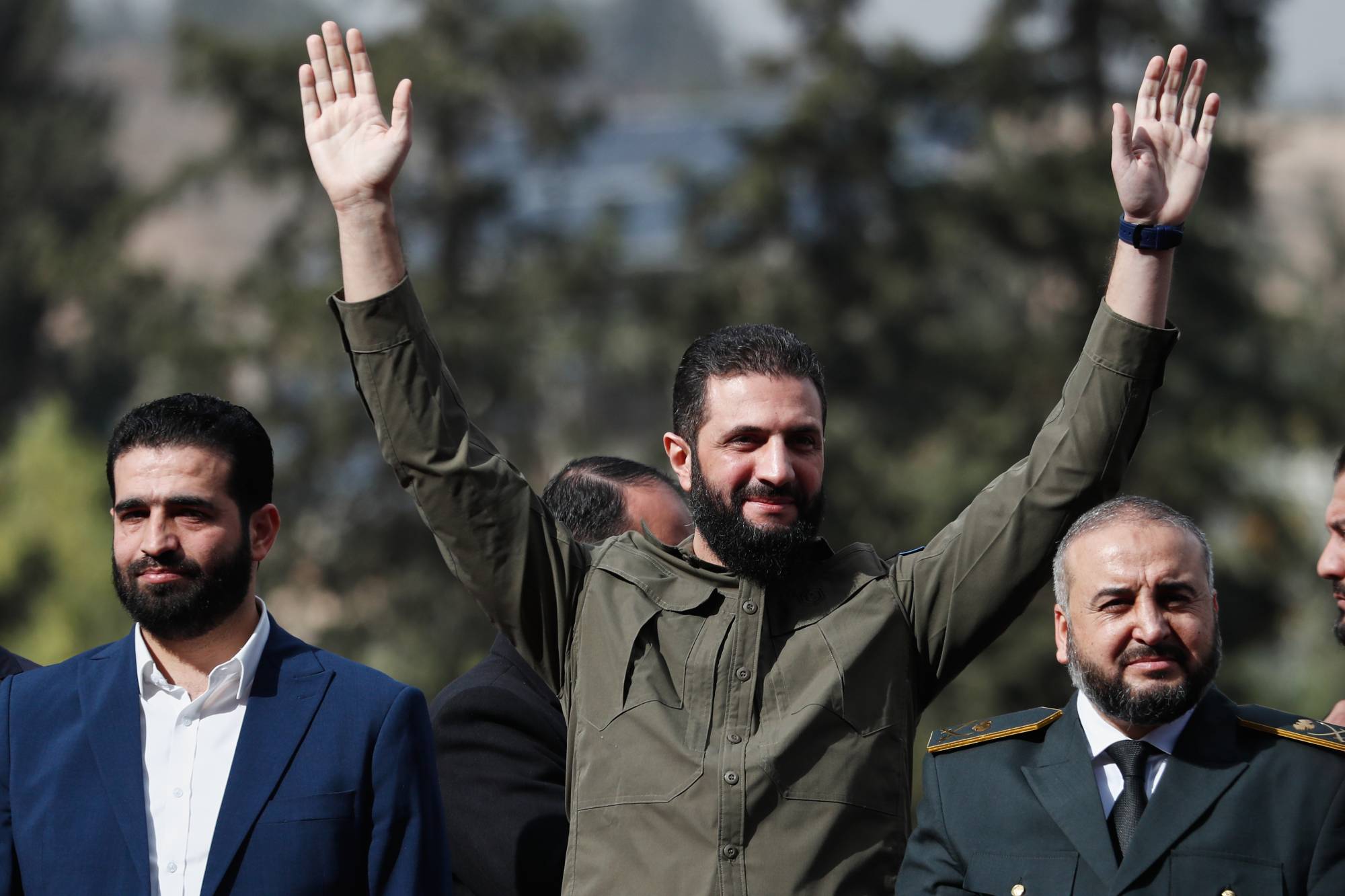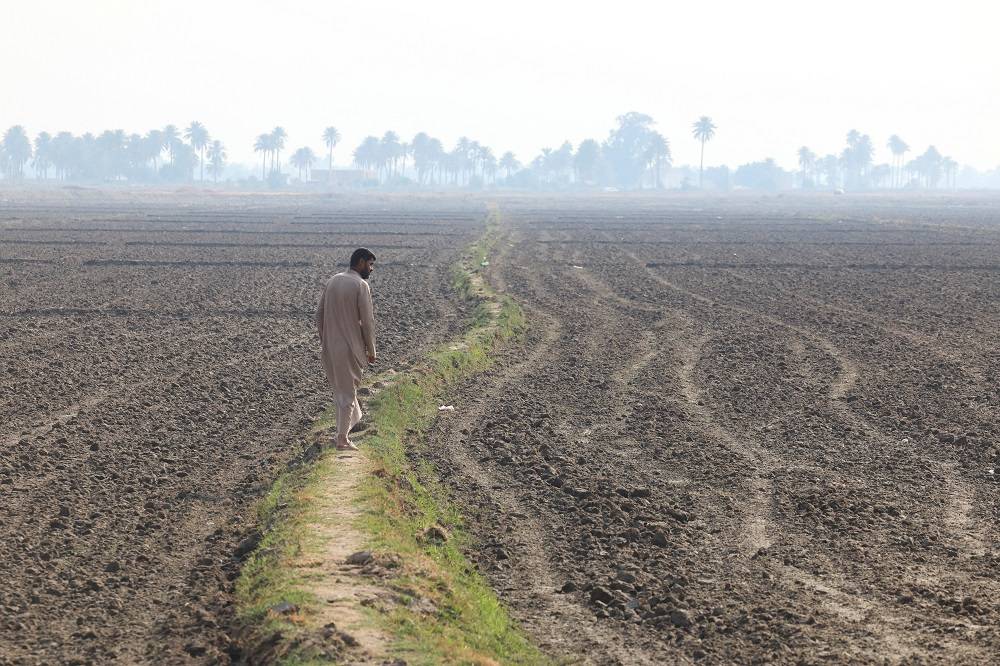Pharmacist Abdulhakim Ramadan, 52, lives with his family in al-Hasaka province in northern Syria. He lives in a city that has been divided between Syrian regime and Kurdish control. His house faces the recruitment center in the middle of security zone that is controlled by the regime. His pharmacy is located on Palestine Street at the dividing line between regime regions and regions under Kurdish autonomous rule since 2014. The Kurdish zones are controlled by the Democratic Union Party (PYD) and Arab and Christian forces.
Ramadan has been a pharmacist since 1992 and, on daily basis, he moves between his residence to his pharmacy amid heavy security measures imposed by the regime and Kurds. He complains about the several military checkpoints set up by both sides.
The presence of the two sides in the area has not been without incident.
Ramadan told Asharq Al-Awsat how clashes had erupted in the past between the regime forces and Kurdish Asayesh near his pharmacy.
“We were trapped for several hours. We could not get out or move due to the severe clashes,” he recalled.
The regime has been striving to take over the area where his pharmacy is located because it is at the heart of Hasaka city’s trade center.
The regime withdrawal from several Syrian regions at the beginning of 2013 gave the Kurds the chance to form local committees in three areas where they make up the majority of the population. The Hasaka and Qamishli cities are one of these areas, in addition to Ain al-Arab (Kobane) in the eastern Aleppo countryside and Afrin city in the northern Aleppo countryside.
Afrin has since January 20 come under a fierce Turkish offensive to expel Kurds from the border area with Turkey. Afrin has been under Kurdish control since 2012.
The Syrian regime has kept two security zones in Hasaka and Qamishli. The zone in Hasaka starts from Qamishli Street in the west and includes the president’s square, government buildings, the judicial palace, municipal headquarters and part of the main market. The zone ends at the military neighborhood in the east.
Palestine Street divides central Hasaka between regime- and Asayesh- controlled areas. The Asayesh are local Kurdish police. Both of these forces deploy checkpoints on either side of the central market. The Asayesh have set up checkpoints near each regime military checkpoint.
Ramadan describes the scene as a “sealed military zone,” saying that the checkpoints should be removed from the city.
The local authority has become in charge of managing the people’s daily lives and various services in the city. It has even introduced Kurdish into school curricula and formed institutions that operate independently from regime circles. These institutions collect taxes from the people and issue official papers. Ramadan revealed that he pays taxes to both the regime and local authority because his pharmacy lies between the regime- and Kurdish- controlled areas.
Suad, a woman in her early 50s, lives near the municipal headquarters in central Hasaka. She describes living in the city as living in “a state within a state” due to the presence of semi-autonomous authorities within the regime’s security zone.
“On the surface, the zone is controlled by the regime, but it is actually managed by the local authority. The truth is, no one knows who is ruling us,” she told Asharq Al-Awsat
Divided city
The situation in Qamishli in the northeastern most point in Syria is not much different than the one in the Hasaka province.
The regime still controls a security zone that includes security headquarters, part of the main city market and Qamishli’s sole airport, which is the only link between the province and the rest of Syria.
A walk along the central market’s main street takes you to an Asayesh checkpoint. Nearby are semi-autonomous administrations. A walk further down the road and you are stopped by a traffic policeman, who stands by the local post office. The office is only meters away from another Asayesh checkpoint. Walking further, you come across a square with a statue of late ruler Hafez al-Assad. North of this point lie the regime’s security agencies, intelligence units, security forces and police.
Asaad Abou Rawand owns a pastry shop that is located just in front of the square with Assad’s statue. He said that the presence of state institutions and regime headquarters serves the citizens in the area.
“My shop is located in the middle of the security zone. Meters west are the regime forces and traffic police. Meters east are he Asayesh members, who work for the local administration. The two sides are in agreement and they do not intervene in the people’s affairs,” he said.
“Customers come to us and they can buy the tastiest sweets without being harassed,” he told Asharq Al-Awsat.
The PYD and semi-autonomous parties had in March 2016 announced a federal system in the regions under their control in northeastern Syria. The region, called Democratic Federation of Northern Syria, was divided into three administrations: Al-Jazeera in the northeast, which includes Hasaka and Qamishli, the north central Euphrates that includes al-Raqqa, Tal Abyad and al-Tabaqa, and Afrin in the northwest.
Fawza Youssef, head of the joint executive authority for the Democratic Federation of Northern Syria, said that the regime has a “limited” presence in the security zones in each of Qamishli and Hasaka.
“They do not have the authority to interfere in the people’s lives because the administration is the real manager of the region. There is no relationship between them unless urgent issues emerge that directly affect the people,” she said.
In Qamishli, the Asayesh controls the majority of the city and has set up headquarters at government institutions. The regime and national defense militia controls the security zone and Qamishli airport. The Sootoro, a Christian force allied with the regime, controls the Christian neighborhoods in central Qamishli.
Kurdish opposition figure and Qamishli resident Saraj Kalash, 52, said that the intelligence and security agencies are almost not operational in the city.
“The better term is that they are sleeping. There have been no reports of arrests, raids or patrols,” he sad.
The regime has limited its role to judicial circles and civilian affairs, he explained.
Each military side has designated the border of their areas of control with checkpoints. The Asayesh do not intervene in the areas under Sootoro control to avoid any clash. Clashes had erupted in 2016 between them when the former attempted to seize control of Qamishli’s Christian neighborhood.
Kalash said that the ties between the PYD and Syrian regime are clear.
“The party controls all institutions and resources in the region, including the economic, social, political, security and civilian aspects of the people’s daily lives,” he added.
Criticism
Before the eruption of the revolt against the regime in 2011, the Kurds, who make up 15 percent of the Syrian population, complained of marginalization by the ruling Baath party.
Haifa al-Arbo, co-governor of the al-Jazeera province, said: “We as Kurds are not concerned with who will rule Syria in the future as much as we care about building a political system based on federal rule and de-centeralized politics.”
“We are a part of Syria and we do not want to secede from it,” she stressed.
The opposition Kurdish National Council, which is part of the National Coalition for Syrian Revolutionary and Opposition Forces, has criticized the PYD’s ties with the Syrian regime.
Council member Bashar Amin said that the local Kurdish administration “does not have complete freedom in taking decisions because it still has ties with the regime. It acts in coordination with it, especially in central issues.”
Analysts and journalist Alan Hassan said that the relationship between the PYD and regime appears “murky” in the media alone. The two sides in fact have common interests in having the regime presence in Qamishli and Hasaka.
“The regime withdrawal from Hasaka would cut off ties between it and the local administration. The latter does not want to secede from Syria and the regime does not want to abandon this territory, which is rich in oil and gas,” he explained.






